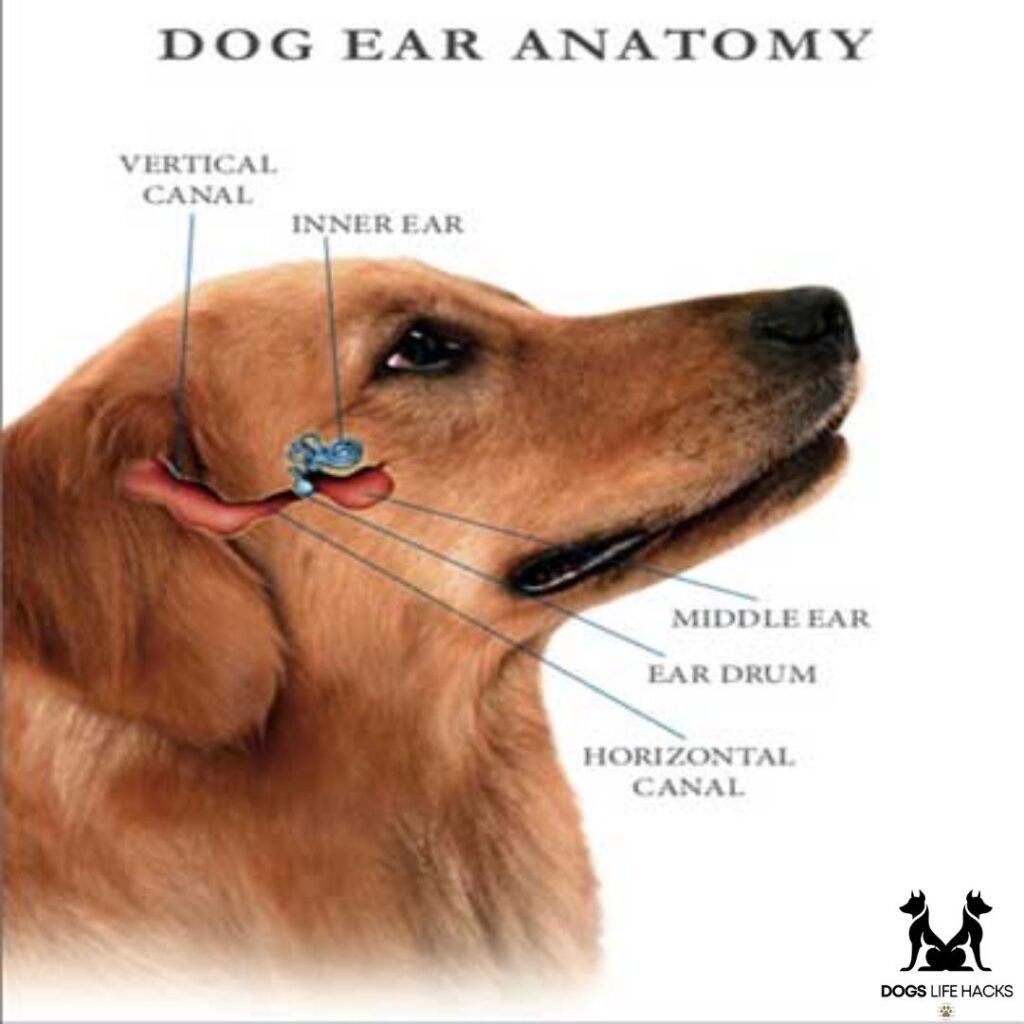How to Remove Ear Mites in Dogs | Symptoms & Best Cure
Ear mites in dogs are tiny, spider-like pesky parasites that can cause significant discomfort, infest the ear canal of dogs and cause health issues for your furry friend. These microscopic organisms feed on earwax and oils. Eliminating ear mite infestations is crucial to prevent severe circumstances and ensure your dog’s health.
The most common ear mite species affecting dogs is Otodectes Cynotis. These mites are highly transmittable, spreading quickly between dogs and other animals through close contact.

Causes of Ear Mites in Dogs
Ear mites in dogs are transmittable diseases. Dogs can get ear mites from direct contact with an infected animal while playing or grooming. Environmental factors may cause ear mites, and they can thrive in warm, humid conditions. An infested environment can contribute to the spread.
Symptoms of Ear Mites in Dogs
Common signs of ear mites in dogs are:
- Intense itching and scratching ears
- Frequent shaking of the head to relieve irritation.
- Dark, crumbly discharge resembling coffee grounds from ears.
- Swelling and Redness of the ear canal.
- Irritability and restlessness.
Life Cycle of Ear Mites in Dogs
Understanding the life cycle of ear mites in dogs is crucial for better diagnoses and treatment.
Ear mites have several stages:
- Eggs: Ear mites lay eggs in the ear canal.
- Larvae: Eggs hatch into six-legged larvae.
- Nymphs: Larvae became eight-legged nymphs.
- Adults: Nymphs mature into adults, continuing the cycle.

Ear mites reproduce very fast. Early detection and treatment help prevent infection from spreading.
Diagnosing Ear Mites
Veterinarians use different ways to diagnose ear mites in dogs:
- Otoscope Examination: For visualization of mites in the ear canal.
- Microscopic Examination: Ear swabs examined under a microscope can confirm the presence of infection.
- Skin Scrapings: Used to detect mites in severe cases.
Accurate diagnosis is always crucial for effective treatment.
Treatment Options for Ear Mites
It includes both over-the-counter and prescription options:
- Over-the-counter Treatments: Using medicines containing pyrethrins, selamectin, or milbemycin can be effective.
- Prescription Medications: Stronger options like ivermectin or moxidectin are available on a veterinarian’s prescription.
Home Remedies for Ear Mites
Natural treatments and good diet for ear mites in dogs offer:
- Olive Oil: Can give relief and kill mites.
- Aloe Vera: Remove irritation and promotes healing.
- Garlic Oil: It has natural antibacterial properties.
Home remedies should complement, not replace, veterinary treatments. Always consult a veterinarian before any step.
How to Clean Your Dog’s Ears
A step-by-step guide to cleaning your loyal friend’s ears:

- Gather supplies: Ear cleaning solution or instrument, cotton balls, and treats.
- Apply solution: Gently pour the cleaner into the ear canal.
- Massage: Gently massage the base of the ear.
- Wipe clean: Use cotton balls to remove extra solution and debris.
- Reward: Give your dog a treat at the end for cooperation.
Complications from Untreated Ear Mites
Untreated dogs can lead to severe health issues, like:
- Ear Infections: It can cause bacterial and yeast infections.
- Hearing Loss: Chronic inflammation and swelling can damage the ear canal.
- Skin Infections: Scratching can cause wounds, leading to secondary infections.
- Behavioral Issues: Persistent discomfort can affect a dog’s behavior and mood.
Preventing Ear Mite Infestations
Preventing ear mites in dogs involves several measures:
- Regular grooming: Clean your dog’s ears regularly.
- Routine check-ups: Regular veterinary visits for general examination.
- Avoid contact: Keep your dog away from infested animals.
Impact of Ear Mites on Puppies
Puppies are particularly easily targets for ear mites. Special considerations include:
- Gentle treatments: Use mild, baby care vet-recommended products.
- Frequent checks: Monitor puppies closely for any signs of ear mites.
- Prevention: Keep puppies away from infected areas.
Early intervention is key to protecting young dogs from ear mites.
Ear Mites vs. Other Ear Infections
Categorizing ear mites and other ear conditions in dogs is crucial:
- Ear mites: Cause dark, crumbly discharge and intense itching from ears.
- Yeast infection: Often results in a waxy, yellowish discharge.
- Bacterial infection: This can cause foul-smelling discharge and severe redness and itching.
Conclusion
Ear mites in dogs are a common yet treatable disease. Early diagnosis, effective treatment, and intensive care are essential to maintaining your dog’s ear and overall health. Proactive measures and regular vet visits can help keep ear mites away, ensuring a happy, healthy life for your furry friend.
FAQs
How do I get rid of ear mites in my dog?
A single dose of NexGard® for Dogs or NexGard SPECTRA® for Dogs is highly effective at treating ear mites in puppies and dogs.
How can you tell if a dog has ear mites?
Intense itching and scratching ears.
Frequent shaking of the head to relieve irritation.
Dark, crumbly discharge resembling coffee grounds from ears.
Swelling and Redness of the ear canal.
Irritability and restlessness.
What is a home remedy for ear mites?
Olive Oil can give relief and kill mites. Aloe Vera removes irritation and promotes healing and Garlic Oil has natural antibacterial properties.
Can humans get ear mites from dogs?
Yes, if your pet has ear mites, these mites can travel to your bedding and furniture and then attach themselves to humans.
Explore More About Dogs
- Can Dogs Eat Goji Berries? Benefits, Risks & Best Food Tips
- Best Way to Use Chicken Meal in Dog Food | Types & Benefits
- Guide for Best Diet for Dogs with Cancer | Save The Pets
- Why Dog Losing Weight But Eating – Find Shocking Reason!
- My Dog Has Diarrhea But Is Acting Fine – What Should I Do?
- Can Dogs Get Cavities? Find out Shocking Truth & Treatment
- Are Chicken Feet Good for Dogs? Benefits and Safety Tips
- Best Fish Oil Dosage Calculator for Dogs: Dog’s Health Guide
- Causes of Dog Shaking Head | Symptoms, and Treatment Guide
- World’s First Airline for Dogs Fly First Class with BARK Air
- Can Dogs Eat Turmeric? Benefits, Risks, and Best Guidelines
- Why is Dog Pooping Blood? Tips by Best Experts & What to Do!
- Irresistible No Bake Dog Treats Your Furry Friend Will Love!
- Curious Can Dogs Have Jicama? Secrets You Need to Know!
- Guide Stages of Dog Pregnancy – Complete Timeline
- Discover the Charming Golden Cocker Retriever Family Dog!

4 Comments